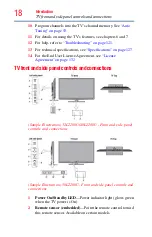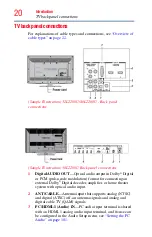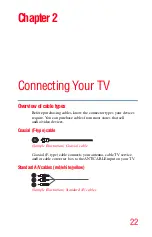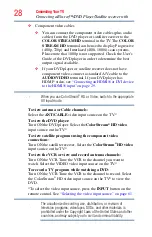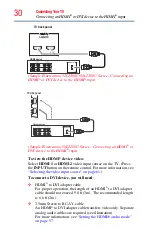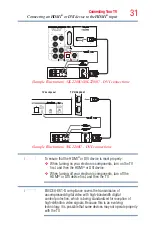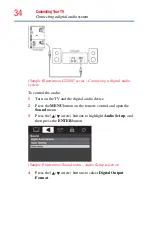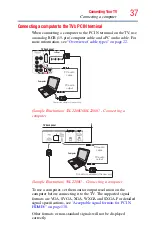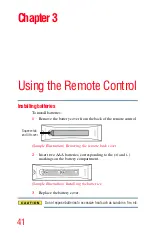
29
Connecting Your TV
Connecting an HDMI
®
or DVI device to the HDMI
®
input
Connecting an HDMI
®
or DVI device to the HDMI
®
input
The HDMI
®
input on your TV receives digital audio and
uncompressed digital video from an HDMI
®
source device, or
uncompressed digital video from a DVI (Digital Visual Interface)
source device.
This input is designed to accept HDCP (High- Bandwidth
Digital-Content Protection) program material in digital form from
EIA/CEA-861-D– compliant
[1]
consumer electronic devices (such
as a set-top box or DVD player with HDMI
®
or DVI output).
The HDMI
®
input can accept and display VGA, SVGA, XGA,
WXGA, SXGA, 480i (60Hz), 480p (60Hz), 720p (60Hz), 1080i
(60Hz), and 1080p (24Hz/60Hz) signal formats. For detailed signal
specifications, see
“HDMI® signal formats” on page 130
Supported Audio format: Linear PCM, sampling rate
32/44.1/48 kHz.
To connect a computer to the HDMI
®
TV’s HDMI® terminal” on page 38
.
To connect an HDMI
®
device, you will need one HDMI
®
cable
(type A connector) per HDMI
®
device.
❖
For proper operation, it is recommended that you use an
HDMI
®
cable with the HDMI
®
Logo (
).
❖
HDMI
®
cables transfer both video and audio. Separate analog
audio cables are not required (see illustration). See
.
NOTE




